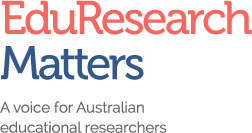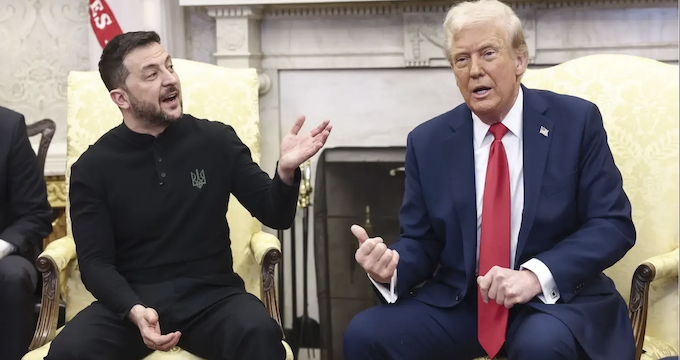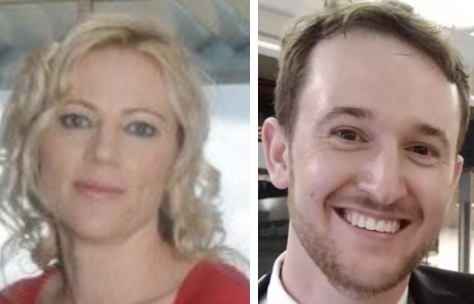This week has borne witness to the destabilising impact of misinformation. We had the perfect example in the fiery meeting between Volodymyr Zelensky and the Trump administration. At every opportunity, Donald Trump and JD Vance spread misinformation. How could teachers deal with that kind of behaviour in the classroom?
Reports on the results of Australia’s most recent national civics and citizenship tests presented an opportunity to educate the public about models of engaged citizenship.
Nearly all of the coverage failed to articulate this priority.
There were several questions gauged to determine what the most prominent concerns of Year 6 and Year 10 students were. Although climate change, racism, discrimination and diseases ranked high on this list, disinformation, misinformation and malinformation were all completely absent.
The current implementation of Australian and state-based reforms are opportunities for curriculum-led responses to these concerns.
A combination of drivers
Some findings from my research into misinformation (as a sub-set of post-truth) suggest a combination of drivers needs to be in alignment.
As starting points:
– Community-formed understandings (such as Sustainable Development Goals, or forms of Entrepreneurship) that are locally relevant need to be integrated into curriculum implementation;
– Teacher agency needs to be balanced with expertise in how to employ it;
– Value and purposeful use of knowledge;
– Treating classes and cohorts as micro-communities: teachers and students constructing a climate of a specific “why” for their subjects, choices of factors enabling learning (materials, environments, strategies), and ensuring these understandings align with professional standards relating to the content being delivered in schools.
A prospective threat
These considerations mean misinformation is treated as a prospective threat to the idea of an educated citizenry, without distracting from other civics and citizenship concerns.
The new syllabuses being implemented over the next few years in all states and territories in Australia provide opportunities to deal with these issues through a lens of inquiry and community-oriented learning. These range from determining ‘value and limitations’ of source material in the Histories, Integrated Humanities and Social Sciences, interrogating the epistemology of theories in Sciences, as well as problematic issues with representation in language for English subjects.
Individual Trees make a Forest
In our current context, the place of individuals, among more global considerations, is represented as insignificant. Calls for educational initiatives to address misinformation have grown exponentially in light of growing anti-semitism, the failure of the Voice to Parliament, the removal of factcheckers on social media platforms and a propensity for misinformation to go viral through public discourse. They are also a key part of a discussions by a recent panel assembled as part of the Inquiry into Civics Education, Engagement and Participation in Australia.
The logic of what people can do therefore needs to be reversed.
As Nikki Brunker put it in an interview elaborating on her paper, Dissonant Glimmers: Individuals always have agency; The choice is whether they choose to believe it, or they are made to believe that they don’t have it.
Localised responses and expertise in handling misinformation can only be developed if there is curiosity, reflection and a gumption to build batteries of test cases to move beyond poaching and recycling ideas from other contexts. Approaches to differentiate practice via media literacy, data and AI literacy, gifted and talented, civics and citizenship, as well as industry-oriented practices, to name a few, need to be aligned with responding to emerging, contemporary circumstances. These responses will help address forms of misinformation as they evolve.
Strategic thinking required
Strategic thinking is therefore required which reconciles assessment tasks with community contextual needs and transparency, to generate cultures of trust and cohesion to work towards individual and shared goals in educational contexts. In this way, the form and types of learning might be more closely aligned with the intended impacts.
These adjustments might then mean that equity in education can be defined withrelational characteristics that develop a readiness for learning. That includes development of dispositions such as curiosity and an ethic valuing fuzzy logic and “hard” problems. Bruno Latour’s concept of respectful critique and a desire to debate ideas are all examples of this. Such aspects of professional practice significantly underpin – and enhance achievement in – more easily measured, fiscal elements.
In turn, each class can be defined more in terms of a micro-community. To make this social contract work however, everyone has to have buy-in. Notably, significant scholarship is being produced about the integration of Indigenous Knowledges (via the Learning from Country framework) to provide a model for what this ideal might look like in practice.
So what are my next steps?
One challenge for educators will be in designing learning experiences that build relationships with community, cultural and business contexts. At one level, these relationships can be leveraged by teachers having knowledge about the provenance of their curriculum. Some analysis that Heather Sharp and I conducted showed that in the new curriculum revisions, there are traditions of democracy embedded in curriculum documents. These ideals may not always be translated into practice.
These considerations that shape instruction however, need to be complemented by a culture that cultivates active contributions to community endeavours. At his book launch in Sydney during 2024, Lee McIntyre noted that even as denialism and misinformation are harmful to democracies, disproving these phenomena are reactive. Relational trust between different aspects of communities allows proactive inoculation against misinformation.
These opportunities recently had a form in Sydney Catholic Schools’ Authentic Learning initiative (2016-2020). More recent initiatives have included UpRising Designers’ inter-system focus on sustainability projects, and the AISNSW’s Deep Learning program on generating localised case studies of disciplinary expertise and evidence-based practice.
What a “better” society might look like
Such civic ideals have also had their demonstration in projects which started in local communities. A variety of projects which are gradually restoring the Cooks River in Sydney has involved networking local businesses, recreation groups, environmental centres, university research projects and schools, to develop solutions to local issues in this catchment.
Both strategies and community need to work in a coordinated effort, to provide the concepts, language and models for what a “better” society might look like, to address challenges that face present and future generations. Then, learning about civics will be tested, but the metric will be factors that enable the change students, teachers and communities want to see in the world.

David Nally has previously held roles coordinating HSIE Faculties and Gifted and Talented Programs at various schools in Sydney. His PhD research, based at the University of Newcastle, focuses on Post-Truth, the impacts of its related issues (such as misinformation, inequalities and AI) on education, and how educators can address them.
Header image EPA Images pic






